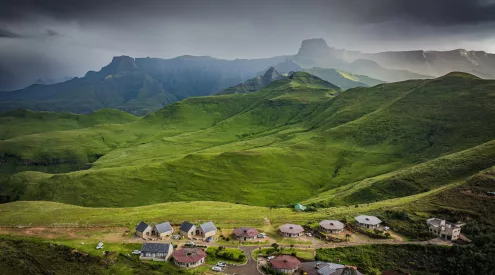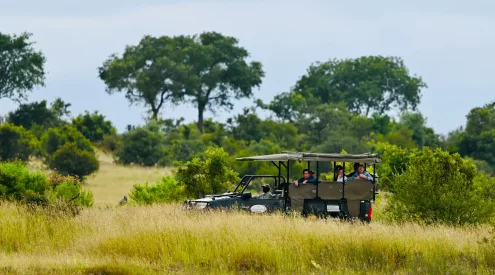The Dusi Canoe Marathon takes place from 27-29 February this year, but the Msunduzi River it runs on is in serious trouble.
Pandora Long’s voice was full of horror. In August 2019, a giant tank of vegetable oil collapsed, felling another tankful of caustic soda at the Willowton Group factory in Pietermaritzburg. Containment barriers failed to stop 1,6 million litres of pollution spilling into the Buynespruit, which feeds into the Msunduzi, which feeds into the Umngeni River. It’s been described as the worst pollution incident to hit the Duzi in at least 30 years.

Day three of the 2019 Dusi Marathon. Image Credit: DUCT
Pandora, chair of the Lower Mpushini Valley Conservancy, described how immediately after the spill, the affected river turned a deathly white. The corrosive caustic soda then combined with the palm and sunflower oils to make a soapy substance that affected river-dwelling creatures’ breathing. ‘The river went a sick dirty grey, like porridge,’ she said.
Everything aquatic died: the tons of dead fish lining the banks were obvious victims, the smaller creatures making up the base of the food chain less so. Communities downstream that rely on the river also suffered.

Caustic soda + ‘innocuous’ vegetable oil = disaster. The US Environmental Protection Agency places similar response requirements on such spills as for petroleum oils. Image credit: Anthony Grote/Gameplan Media
Brandon McGugan, a contaminated-land expert, said that while the containment booms and clean-up teams deployed after the event were appropriate, ‘the proverbial horse has bolted. Rivers with flowing water are dynamic systems and are probably some of the most sensitive and challenging environments to clean up.’ Concerns raised by various parties also include whether the municipality has been doing the inspections and monitoring that by-laws require. In November, Willowton Group said ‘all necessary measures [to prevent a spill] had been in place’. By now, investigation reports into the incident should have been released and Willowton’s culpability decided upon.
But the effect on the river will last far longer. Mark Graham, specialist aquatic scientist and director of GroundTruth, appointed to investigate the spill, explained how the pollution travelled as far as 60 kilometres to Inanda Dam, but did less damage as it became more diluted. By the end of October, the first report on residual impacts was in. Some ‘reinnoculation’ of fish into the system had occurred, said Mark, but the impact on adults was severe. Some fish species take four to five years to reach reproductive maturity. As bad: the essential building block of the food chain, benthic diatoms or microscopic algae, showed a ‘mirroring’ of the results on aquatic invertebrates and fish.
The water quality is, in essence, back to where it was before the spill, albeit depleted of life. But that’s nothing to crow about: this is an abused river. In 2016 there was a spill of furnace oil into another tributary called the Dorpspruit. In previous years, stifling aquatic alien plants have sucked up oxygen in the water, and just a year before the spill The Witness reported that the Duzi was its ‘dirtiest in years’. Leaking and broken sewers are part of the problem – and the figures are terrifying: E. coli levels of 10 , 000 to 25 ,000 per 100 millilitres of water present a moderately high risk; over that is high risk, and over 50 000 is very high. In August 2019, E. coli samples in the Buynespruit measured a staggering 727,000.
As David Macleod, a paddler who has completed 20 Dusi races, said, Dusi Guts is not new (referring to the diarrhoea that regularly affects canoeists). E. coli levels have rocketed over the past decade, and since the spill, said Mark, the Msunduzi’s health is compromised. Its ‘resilience’ is down, much like an over-stressed human. These systemic problems need long-term attention, and the only good result of the spill is a collaboration between conservation organisations, civil society and industry to clean up the Buynespruit. The Duzi – like the Vaal, and so many of South Africa’s precious rivers, also suffering from collapsed sewerage infrastructure – needs the laws that supposedly protect it to be enforced. Otherwise, we will still have rivers but they will be empty of life. Never mind canoe races.
What You Can Do
Donate time and cash to the Duzi-Umngeni Conservation Trust, which tackles alien vegetation, pollution, litter and ignorance. duct.org.za
Field notes by Janine Stephen




















